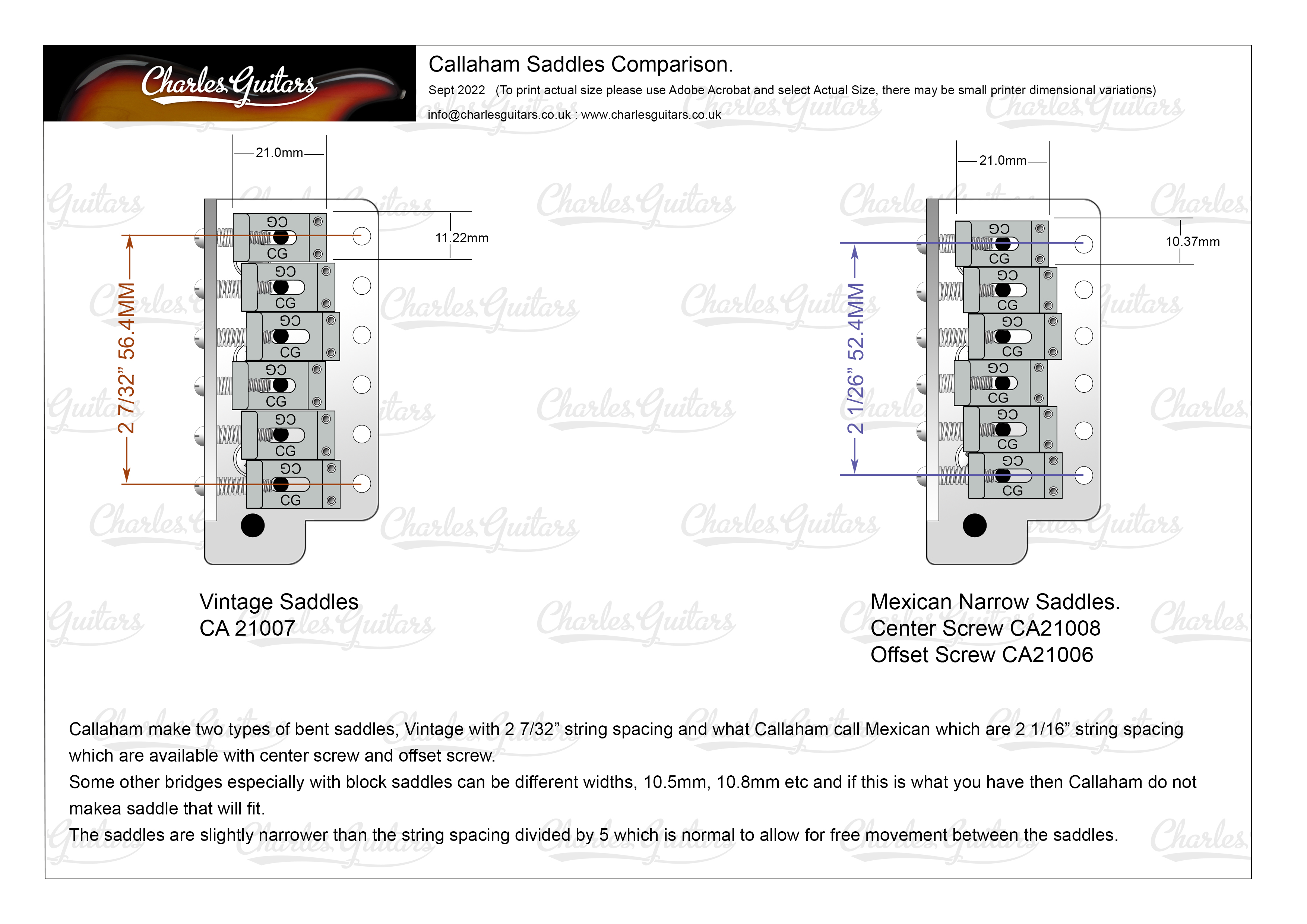Callaham's saddles are designed from original pre-CBS saddles, with some improvements. Callaham has slightly lengthened the string slot as compared to pre-CBS saddles, so that the strings will not bind and bend against a sharp edge before going over the saddles, which reduces string breakage. Fender's current production saddles have their slots moved too far to the rear, causing string breakage and loss of downward pressure on the saddle, hurting both sustain and tone.
Callaham's saddles, like pre-CBS saddles, have threads running the entire height of the front skirt of the saddle. Fender's current production saddles have fewer threads and a shorter front skirt. Consequently, the Callaham height-adjustment screws are held more securely, with more thread contact, maintaining sustain and saddle stability.
There is a commonly held belief that pre-CBS saddles were hardened, but Callaham states that every pre-CBS saddle they've tested measures on average only 50 Rockwell B. Callaham has chosen steel with a hardness of 95-98 Rockwell B for their saddles. Further, the steel work-hardens in the making of the saddle and is well over 115 Rockwell B where the string crosses.
Strat saddle sets will ship with different length height-adjustment screws, and different length springs on the intonation screws. You'll want to make sure you get them in the right place. The E saddles have shorter height-adjustment screws. The low E and A saddles have the shorter springs, while the other four saddles have longer springs. When adjusting the intonation, if you find that your guitar requires the G saddle to be pulled further to the rear than the A saddle, the springs on the A and G saddles can be swapped.
Callaham offer three lengths of screws which can be ordered separately so that little or none of the screw is protruding above the saddle. The saddles ship with 1/4" and 3/8” adjustment screws.
